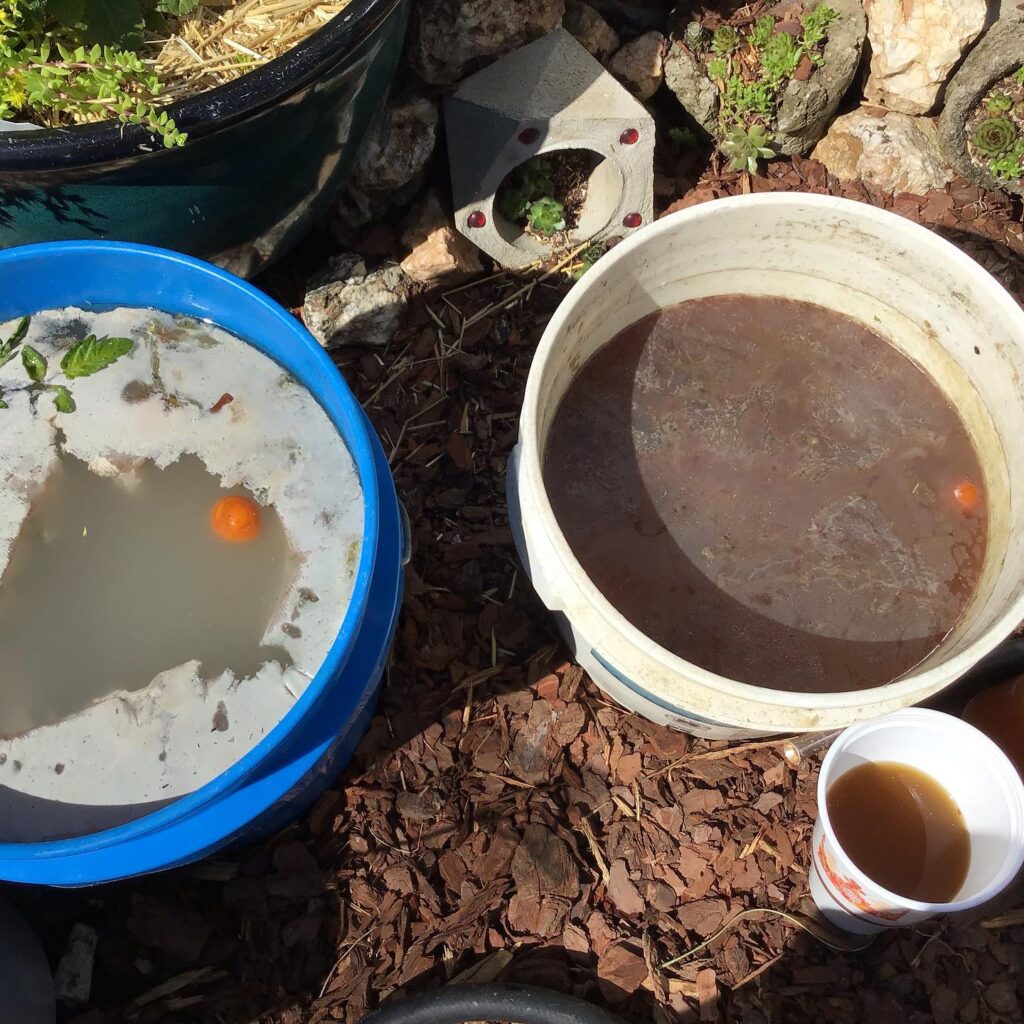Gardening enthusiasts and agricultural practitioners alike are constantly in search of effective and environmentally-friendly ways to nurture their plants. One such solution that has gained attention is Jadam Liquid Fertilizer (JLF), a natural and organic liquid fertilizer derived from plant materials. This article delves into the benefits, production, usage, and precautions associated with JLF, offering a comprehensive guide for those seeking to harness its potential for healthy plant growth.
Jadam Liquid Fertilizer Calculator
The Genesis of Jadam Liquid Fertilizer
Jadam Liquid Fertilizer, also known as JLF, stands out as a product of innovation, rooted in the principles of sustainability and natural processes. JLF is created through an anaerobic method called putrefaction, which essentially involves breaking down organic materials in the absence of oxygen. This unique approach ensures that the resulting fertilizer is devoid of any harmful chemicals, making it a safe and eco-friendly option for both plants and the environment.
The Making of JLF: A Step-by-Step Guide
Creating JLF at home requires a few easily accessible ingredients and a willingness to follow a simple process. To initiate the production of JLF, you will need 1 cup of leaf mold and a mixture of organic materials like wild grass and garden crops. These materials are soaked in chlorinated water that has been allowed to settle for about 24 hours. The concoction is then placed in a container, ideally a bucket with a lid to prevent the entry of unwanted bacteria.
A crucial element in the JLF production process is the incorporation of real wild grass. This step isn’t merely for aesthetics but rather to encourage the growth of live organisms within the mixture. These organisms contribute to the overall potency of the fertilizer, enhancing its effectiveness in nourishing plants.
The Application and Benefits of JLF
| Nutrient Content | Nitrogen (N) | Phosphorus (P) | Potassium (K) | Other Nutrients |
|---|---|---|---|---|
| Jadam Liquid Fertilizer | 1.5% | 1.0% | 1.0% | Trace minerals, organic matter |
| Commercial Brand A | 2.0% | 0.5% | 0.5% | Secondary nutrients |
| Commercial Brand B | 1.0% | 2.0% | 0.5% | Trace elements, mycorrhizae |
JLF boasts a nutrient composition that mirrors that of natural organic matter, which plays a pivotal role in promoting plant growth. This fertilizer offers a concentration of nutrients akin to popular natural extracts like kelp and seaweed, yet with greater potency. Its nutrient-rich formula makes it suitable for an array of applications, including food crops, potted plants, and hydroponic systems.
Applying JLF to your plants is a straightforward process. For feeding, dilute 1/2 cup of JLF per gallon of water and use it to water the plants at their roots. Additionally, JLF can be mixed with water (2 parts water to 1 part JLF) and used for foliar spraying or pest control applications. While JLF is generally safe for humans, animals, and the environment, precautions should be taken to avoid skin contact, as it can potentially cause skin rashes.
Proper Storage for Longevity
After the application, it’s essential to properly store any leftover JLF for future use. This storage process not only maintains the quality of the fertilizer but also enhances its safety. Keeping JLF in a sealed container or sprayer is recommended. For extended storage, you can take extra precautions by adding water purification tablets and securing the lid with duct tape. A thorough shake before use ensures the even distribution of the contents. This extra step is particularly beneficial given that tap water often contains contaminants that can compromise the fertilizer’s effectiveness.
The Science Behind JLF: Addressing Common Questions
- Is Jadam Liquid Fertilizer Safe for Home Gardens?
Absolutely. JLF is designed to enhance plant resilience and promote healthy growth. It is safe for use in home gardens, providing a natural alternative to conventional fertilizers. - What Sets JLF Apart?
JLF offers a host of benefits, including its organic composition, rapid absorption, and versatility. It can be used for a variety of plant types and growing conditions, making it an excellent choice for plant enthusiasts and agricultural professionals alike. - How Does JLF Affect Soil and Plants?
JLF does not alter the pH balance of the soil and remains stable until it is absorbed by the plant’s roots. Its rapid absorption, as quick as 15 minutes, ensures that plants receive the essential nutrients they need for optimal growth. - How Should JLF Be Applied?
The best results are achieved by applying JLF directly to the roots of the plants. For potted plants, dampen the soil before applying the solution. In cases where you are watering other plants, consider using JLF for additional nourishment. - How Frequently Should Plants Be Watered with JLF?
JLF should be applied when watering plants with gallons of water. It is recommended to apply before and after using other liquid fertilizers for the best results.
Considerations and Drawbacks
While JLF offers numerous advantages, it’s essential to consider a few aspects before incorporating it into your gardening routine. First, examine the NPK ratio (nitrogen-phosphorus-potassium) of the fertilizer, as different plants have varying nutrient requirements. Secondly, understand that the concentration levels of liquid fertilizers can vary among brands. Opt for products with lower concentrations for longer-lasting effects.
Cost can be a concern for some individuals, as liquid fertilizers are perceived as more expensive. However, it’s important to note that the price per gallon of concentrated JLF is relatively affordable. Additionally, when used correctly, JLF’s formula allows for informed decisions about how much to use and how long the supply will last.
In Conclusion
Jadam Liquid Fertilizer emerges as a promising option for those seeking to nourish their plants with natural and organic methods. Its unique production process, easy application, and numerous benefits make it a valuable addition to both home gardens and commercial agriculture. By following the recommended guidelines for application, storage, and consideration of individual plant needs, gardeners and farmers can harness the potential of JLF to foster robust, resilient, and thriving plants.


